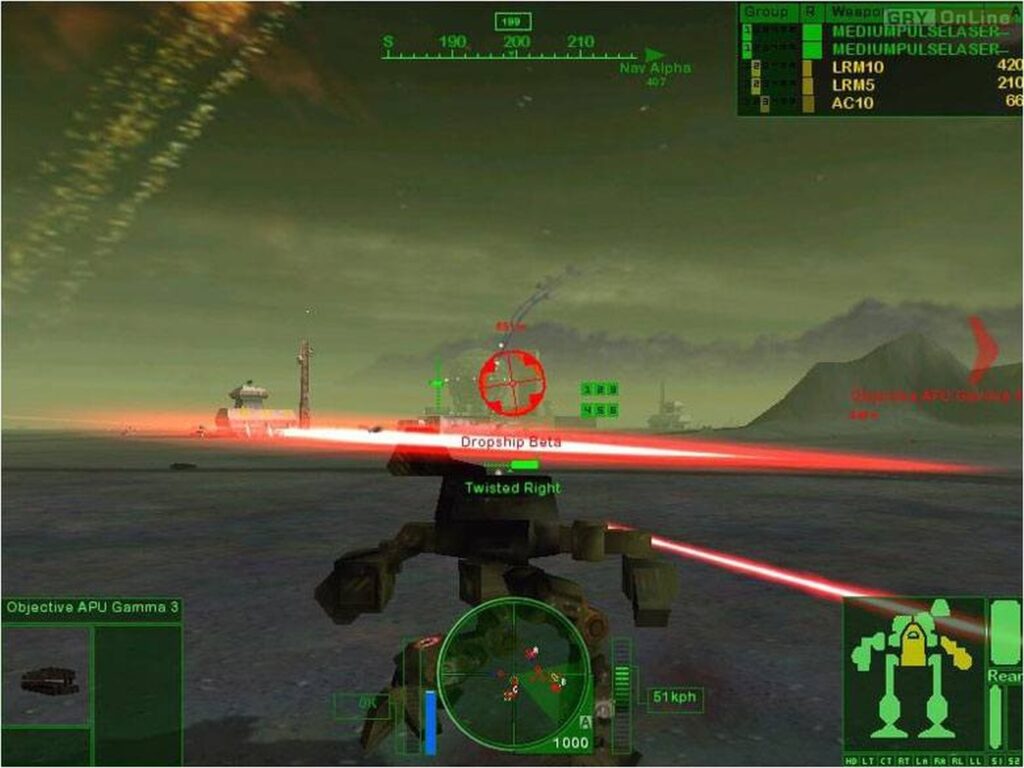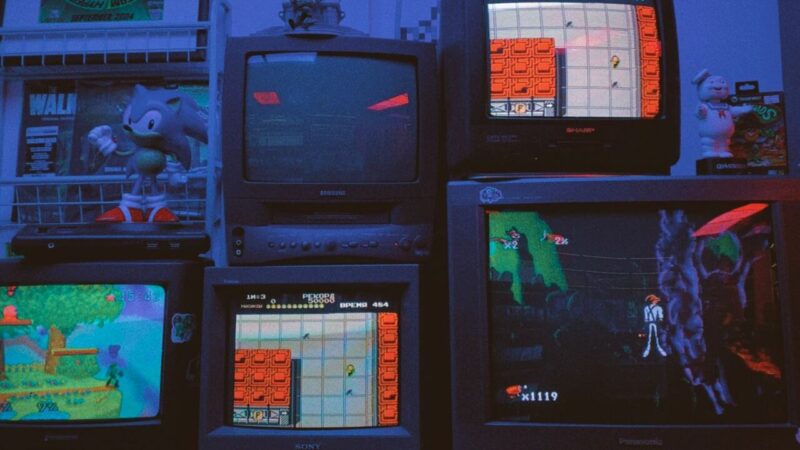The evolution of video game art styles, from the pixel art of early arcade games to the stunning photorealism in modern titles, is a fascinating journey that mirrors the technological and creative advancements in gaming. This article will explore this transformation and how video game graphics have evolved over the years.

Pixel art: The early days
In the late 1970s to early 1990s, pixel art was the predominant form of video game graphics. This style used small dots, or pixels, to create images. It emerged due to the technical limitations of early gaming hardware, which included low resolution, limited color palettes, and minimal memory. Pixel art drew inspiration from various sources, including arcade games, comic books, and animation. Despite its simplicity, pixel art allowed for significant creativity and experimentation, giving rise to classics like “Pac-Man,” “Super Mario Bros.,” “The Legend of Zelda,” and “Final Fantasy.” However, pixel art’s ability to convey realism was limited, presenting challenges in scaling to larger screens and higher resolutions.
Despite these limitations, pixel art remains beloved in the gaming community. Its enduring appeal lies in its nostalgic value, evoking memories of the early days of gaming for many players. The distinct aesthetic of pixel art has an enduring charm and is often seen as an art form in its own right. It encourages imagination and abstraction, allowing players to fill in details with their minds. Moreover, in an era where high-end graphics are the norm, pixel art’s simplicity offers a refreshing contrast, reminding us that sometimes less is more in visual storytelling.

3D graphics and polygons
The mid-1990s witnessed a shift to 3D graphics, driven by hardware improvements like faster processors, increased memory, and advanced graphics cards. 3D graphics, using polygons to create three-dimensional models and textures for color and detail, enabled more realistic, detailed, and varied visuals. This transition also brought about more dynamic and interactive gameplay, with changing camera angles, lighting effects, and physics simulations. Titles such as “Doom,” “Tomb Raider,” “Half-Life,” and “Grand Theft Auto” showcased these advancements. However, creating 3D graphics was more complex and resource-intensive compared to pixel art.

Low poly art: Embracing minimalism in 3D
Low poly art became popular in the 1990s, characterized by a minimalistic approach to 3D graphics, using fewer polygons. Initially a necessity due to hardware limitations, this style evolved into an appreciated aesthetic. It’s known for its abstract and geometric beauty, conveying atmosphere and story subtly yet profoundly. Unlike high-detail 3D graphics, low poly art uses simplified shapes, adding uniqueness and an artistic touch.
Due to its minimalistic appeal and lower resource demands, the 2000s and 2010s saw a resurgence in low poly art, especially among indie game developers. This style is employed across various genres, from adventure games to artistic experiences.
Today, low poly art’s enduring appeal lies in its capacity to suggest detail and texture without high-resolution graphics, making it ideal for projects with limited resources.

The intricacies of game art development
The evolution of game art is closely linked to the technological advancements in gaming hardware. Initially, game artists were often the programmers, resulting in simplistic designs, as seen in games like “Pong.” The early 1980s marked a more intricate approach to game art, pioneered by artists like Shigeru Miyamoto, the creator of Mario and Donkey Kong, who introduced more detailed 2D characters. By the early 1990s, the budget for art in video games increased, allowing for the advent of 3D art. Due to its complexity, the shift to 3D required careful collaboration between artists and programmers. Consoles like the Nintendo 64 and Sony PlayStation played a crucial role in popularizing 3D games. The late 1990s and beyond saw a focus on realism, with developers experimenting with rendering techniques to achieve more lifelike graphics.

Cel-shaded graphics: Reinventing visual narratives in gaming
Cel-shaded graphics emerged in the early 2000s, marking a significant departure from the pursuit of realism in video game art. This style is characterized by its distinctive use of bold outlines and vivid, flat colors, reminiscent of comic books and traditional hand-drawn animation. Cel-shading offered game designers an original approach to creating artistically unique worlds. This trend highlighted the industry’s versatility in embracing diverse artistic expressions, going beyond the conventional 3D and photorealistic styles.
The impact of cel-shading on gaming was profound, as it opened up new possibilities for storytelling and character design. Games like “The Legend of Zelda: Wind Waker” utilized cel-shading to great effect, crafting a vibrant, enchanting world that stood in contrast to the hyper-realistic trends of its time. Similarly, “Borderlands” adopted this style to complement its unique blend of humor and action, creating a visually engaging and recognizable game. The appeal of cel-shading lies in its ability to evoke an emotional response similar to animated films, blending the line between interactive gaming and cinematic storytelling.
Moreover, cel-shading has proven to be a versatile style, adapting to various genres, from action and adventure to RPGs. It allows developers to experiment with different color palettes, lighting effects, and artistic techniques, resulting in games that feel like interactive art pieces. As technology continues to evolve, cel-shading has also seen advancements, with newer games showcasing more refined and detailed cel-shaded visuals. This ongoing evolution keeps the style fresh and relevant, demonstrating the gaming industry’s commitment to exploring and redefining the boundaries of game art.

HD-2D designs: Blurring the lines between past and present
HD-2D, a recent innovation in video game art, presents a fascinating blend of retro charm and contemporary technology. This style renews traditional pixel art by infusing it with modern elements like dynamic lighting, high-definition clarity, and depth effects. HD-2D is more than just an aesthetic choice; it’s a tribute to the legacy of classic 2D games while pushing the envelope of visual storytelling in the contemporary gaming landscape.
Games such as “Octopath Traveler” have become showcases for the HD-2D style, capturing the essence of vintage gaming while delivering a visually rich and modern experience. These games demonstrate how HD-2D can bring depth and life to 2D characters, creating immersive worlds that feel both familiar and original. The juxtaposition of pixel art with advanced graphical effects creates a unique visual experience that appeals to nostalgic gamers and those seeking innovative art styles.
Beyond its visual appeal, HD-2D also represents the ongoing dialogue between the past and present of game design. It acknowledges the roots of video gaming in pixel art while leveraging the advancements in graphics technology. This fusion of eras in video game art proves the industry’s dynamic nature and ability to constantly reinvent itself. As game developers continue to explore this style, HD-2D will evolve, potentially incorporating more advanced techniques and further blurring the lines between old-school charm and modern sophistication. This ongoing exploration underscores the video game industry’s dedication to honoring its history while eagerly embracing future possibilities.

Isometric graphics: A unique perspective
Isometric graphics offer a distinctive visual style in video games, characterized by a pseudo-3D presentation from a fixed, angled perspective. This style creates an illusion of depth and three dimensions using 2D graphics. It has been particularly popular in strategy and role-playing games, where the isometric view allows players to see large sections of the game world simultaneously, facilitating strategic planning and exploration.
Games like “Baldur’s Gate” and “Diablo” are examples that demonstrate the effectiveness of isometric graphics in creating immersive game environments. The isometric view provides a unique balance between the detailed environments of 3D games and the clarity of 2D graphics. It allows for complex game designs where strategic depth is crucial. Moreover, isometric graphics have a timeless quality, retaining their appeal over the years and continuing to be a popular choice among game developers for certain genres.

Voxel art: Building worlds with cubes
Voxel art in video games represents a fascinating blend of simplicity and complexity. It uses 3D cubes, or voxels, similar to pixels in 2D graphics, to create visually distinct and often charming environments. The most iconic example of voxel art in gaming is “Minecraft,” a game that changed how we perceive game design and aesthetics. In “Minecraft,” players engage in a world made entirely of voxels, allowing for creativity in building and exploration. The appeal of voxel art lies in its unique combination of a basic, block-like appearance with the ability to form complex structures and landscapes.
This art style offers a different kind of immersion, one that encourages interaction and manipulation of the game world. Unlike more detailed and realistic graphics, voxel art has a certain timeless quality and accessibility. It simplifies visual elements without sacrificing depth and functionality, making it particularly popular in sandbox and adventure games. Furthermore, voxel art has a universal appeal, attracting a wide range of audiences, from younger players to experienced gamers. The continued popularity of voxel-based games highlights their enduring charm and the potential for this art style to inspire creativity and innovation in game design.

Hand-drawn art: Reviving classic animation techniques
Hand-drawn art in video games revives the classic era of animation, infusing digital worlds with the rich, authentic textures of traditional drawing methods. Games like “Cuphead” are examples of characters and environments hand-drawn and animated, reminiscent of early 20th-century cartoons. This art style stands out for its fluidity, expressiveness, and distinctly vintage feel, offering a visual experience that is both nostalgic and refreshing.
The process of creating hand-drawn art in games is labor-intensive and requires a significant level of skill and attention to detail. Each frame is drawn by hand, just as in traditional animation, and then integrated into the game, creating a lively visual narrative. This method charges the game with a unique personality and artistic integrity that resonates with players who appreciate the craft of animation.
Hand-drawn art in games not only celebrates the heritage of animation but also allows developers to tell stories in a visually compelling way, engaging players through both aesthetics and gameplay.

Photorealism: The future of game graphics?
Photorealism in video games is an ongoing pursuit, aiming to create graphics indistinguishable from reality. Enabled by recent technological innovations like high-definition screens, ray tracing, and artificial intelligence, photorealism enhances games’ storytelling, emotion, and expression. Games like “The Last of Us Part II,” “Red Dead Redemption 2,” “Death Stranding,” and “Cyberpunk 2077” demonstrate significant strides towards this goal. However, achieving photorealism is costly and time-consuming, and it raises ethical and social concerns, such as privacy issues due to the use of AI in facial recognition and the uncanny valley effect.
The evolution of game art styles is not just a tale of technological progress; it’s a story of expanding diversity in artistic expression. Each style has contributed uniquely to the gaming landscape, from the nostalgic pixel art of early games to the immersive photorealism of modern titles. This progression reflects advancements in technology and a broadening canvas for artists, offering varied and innovative ways to tell stories and evoke emotions. As we look towards the future, the diversity in video game graphics continues to grow, enriching the gaming experience and celebrating artistic freedom in this dynamic medium.
Next: Female representation in games: Evolution, impact, and future





